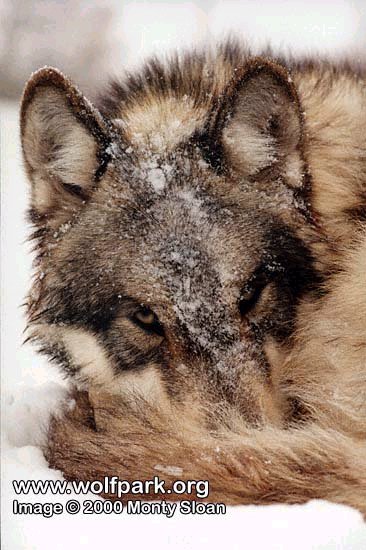 |

*~Summer~*
The summer is a time of growth, the Winter coat is long gone, replaced by a short summer coat. At This time the pups are still using the den, the mother will again start hunting with the pact, the pups are never left alone. This is a time of play and fun for the pups, the adult wolves put up with a lot of puppy abuse!. At about eight weeks of age they abandon the den and move to a 'rendezvous' site. these areas are more centrally located to the area that the pack is hunting.~
This is a time the young wolves learn to hunt, eventually they will be part of the hunt, there place in the pack will also start to be determined.~
Most of the wolves' activities take place at night, this is to avoid the heat of the day. The wolf will follow the gravel bars and river beds, they will also keep to the high ridges for a good view of possible prey. The way wolves hunt in the summer is similar to winter hunting, but they are not hampered by the elements.
*~Winter~*
In winter the wolf's thick coat keeps them warm even on the coldest nights, they have practically no body heat loss through their fur(snow will not melt on a wolf's fur).
At night the wolf curls up, it covers its nose with its long tail. What this does is hold the warm air exhaled over the feet and nose, warming them. When the wolf inhales the air is filtered through the tail and is warmed by the exhaled air before it is breathed in. The Wolf will feed heavily in the fall, just before winter. Hunting is difficult in the winter, the pack may have periods of inactivity and extra stores of fat will help them survive in these times.~
When hunting in winter the wolf will conserve energy whenever possible, by following the same trail as the prey animal, staying upwind, and staying out of sight of the prey as long as possible.Wolves will more likely prey on young, sick or older animals past there prime, but the wolf being opportunistic will hunt a strong healthy animal. |  |

